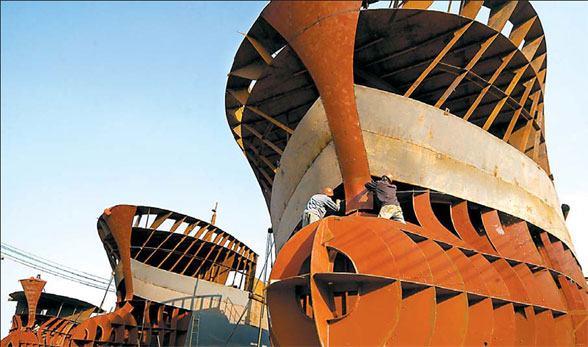
In a Shanghai shipyard, a gigantic 8,530 TEU container ship is ready for its maiden voyage. At the same time, in a drydock in northeast Dalian, a 300,000-ton oil tanker is ready for delivery.
Such high value and sophisticated vessels, which were the domain of South Korean and Japanese shipbuilding industries before, are now good examples of China's drive to surpass its neighbors in the global shipbuilding market.
As the race between the countries intensifies, China, the world's third largest shipbuilder (behind No 2 Japan and No 1 Korea), has upgraded its ships from conventional crude oil tankers and bulk carriers into high value-added vessels, such as high-speed containerships, liquefied natural gas carriers and very large crude oil carriers.
And in terms of shipbuilding orders, Chinese companies have already exceeded South Korea and Japan.
According to a British report, China shipbuilders had orders for 14 million CGT Compensated Gross Tons (CGT -ship's capacity measure) in January 2008, accounting for 50 percent of the world's total. South Korea had orders of 600,000 CGT and Japan had 300,000 CGT.
In terms of new orders, China was actually No 1 last year, totaling 98.5 million deadweight tons and taking a global share of 42 percent, up 12 percentage points from a year earlier and exceeding South Korea.
The growth of the Chinese shipbuilding industry was relatively rapid, though for more than ten years, the country has been playing catch-up with Japan and South Korea.
China has been the world's third largest shipbuilder for 12 years. By 1995, Chinese shipbuilders replaced Germany in the third spot with a 5 percent market share in the world.